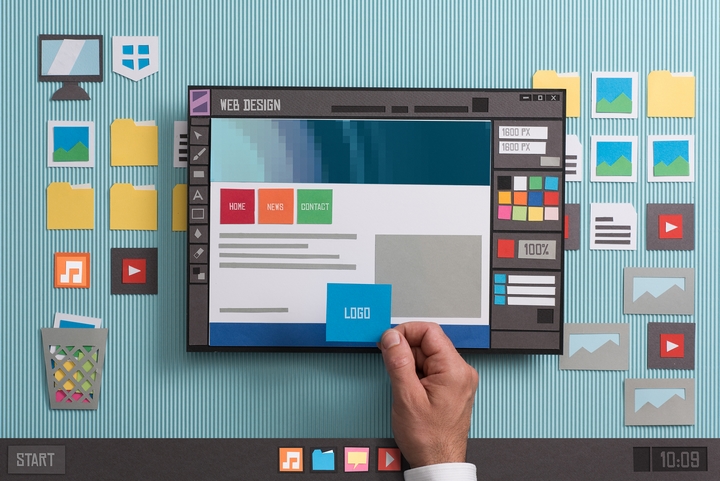The ability to launch a website, create a store, and sell products online is easy with Shopify. The platform provides users with everything they need to have fun creating a successful online store without having to do a lot of the grunt work that normally comes with an eCommerce website. Like with any eCommerce website, it’s more than possible to make mistakes and compromise your success if you haven’t ever had a Shopify store before.
Here are the best Shopify for beginners tips to help you zero in on where to focus your attention and what to optimize.
Tip #1: Picking a Shopify Plan

With Shopify, you have the basic plan, the main plan, and the advanced plan. They vary quite a bit in cost and features. If you’re just starting, the Basic Shopify plan is what you need. The benchmark to hit to move to the next plan is around $20,000 in monthly net sales.
If you’re underneath, just go with the Basic and start there. You can always upgrade. Additionally, there are Shopify fulfillment services that help you manage everything easily. Choose the best plan for your business objectives.
Tip #2: Customizing Your Shopify Store

Brand your Shopify store properly with your company’s colours, fonts, images, and visuals to make it stand out. Use Shopify’s built-in tools and invest the time in giving your store an optimized design for you and your audience.
Tip #3: Create High-Quality Product Pages

A product page should have at least a paragraph’s worth of description, price, product images, product specs, and any other details that could be relevant to the sale. Optimize the page with keywords and metadata as well. After you’ve set up product pages, categorize them by collection. Always have in mind easy, intuitive navigation.
Tip #4: If You Have Lots Of Product To Add, Take Your Time

You don’t need to launch a Shopify store with hundreds of products. That’s a lot of work! Don’t overwhelm yourself. Do go slow. Let’s say you have 250 products you want on there. Start by adding 25 on day 1. Focus on smaller batches. See how everything looks and set up the next batch of 25 a few days later. This will help pace things out a bit better.
Tip #5: Decide On Third-Party Payments And Shipping

As you set up your store, you can set up payment gateways like PayPal and similar third-party payment providers. You will also want to configure what shipping rates you offer, whether that’s a flat rate, by weight, or based on price. You will want to research what’s best for your company.
Tip #6: Test Your Shopify Store On Mobile

You’re probably setting up your Shopify store on a desktop. However, most eCommerce buyers come from mobile. Double-check to ensure your Shopify store renders correctly, and images aren’t being resized poorly. Mobile testing is key, especially before ad targeting and marketing campaigns come into play.
Tip #7: Use The Shopify App Store

The Shopify App Store can add many features and functionality to your store. They’re worth a perusal. Installing apps, you can set up email marketing, integrate social media, add product review sections, and more. There are a few limitations on what you can do with a Shopify store with so many apps and features to comb through here.
Tip #8: Create and Connect Your Social Media Channels

If no one knows you exist, your Shopify store won’t see a single unit. Turn to social media, i.e. Facebook, Instagram, Pinterest, and other channels. It’s free advertising. Post your products through scheduled postings. Think long-term. In time, you can drive a lot of free traffic to your website without spending more time.
Tip #9: Add Your Policies to Your Footer

This is a mistake a lot of Shopify beginners are likely to make. Do put your policies into your footer so that customers can get the details on aspects of your business, such as your return policy, warranty information, and refund policy. This will reinforce the authority and legitimacy of your brand.
Tip #10: Your Shopify Analytics Are Very Important

To track your store’s performance, all you need are your Shopify Analytics. They’ll tell you what you need to know about sales, traffic, and conversion rates. You’ll see where you’re getting clicks from, what products are selling and what isn’t, and more. Analytics and automated reports allow you to optimize your store and increase sales simply by following the data.
Tip #11: Set Up Shopify Blogs with Regular Posts

Shopify has a built-in blog feature that every Shopify store should use. Publish content that’s informative, evergreen, and related to your products and industry. After these blogs hit social media, search engines, and online directories, it’s more exposure and more clicks. Post blogs regularly, and over time, you can see your website analytics increase significantly.
Tip #12: Set Up Your Email Notifications

Email notifications should already be turned on when you set up your beginner Shopify store, but if they’re not, turn them on. This way, you’re informed whenever there is an order, inquiry, or similar event. When you get started, this will let you know how your site performs and if anything needs addressing.

